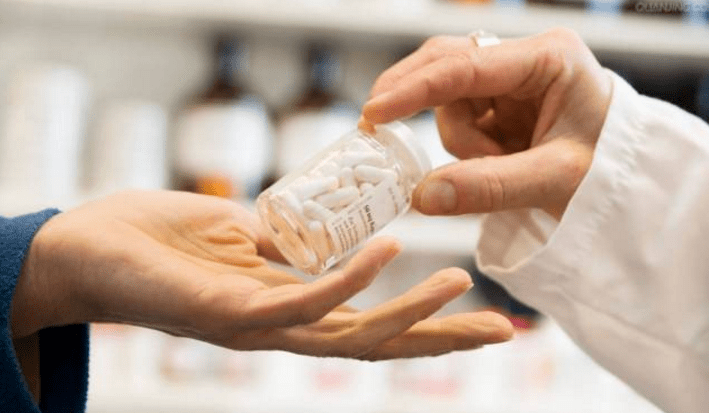扫一扫 添加小助手
服务热线
13818320332
扫一扫 关注我们
 本文发表于《制药技术》第41卷,第9期,第66页,作者Siegfried Schmitt博士,PAREXEL首席顾问,供大家参考:
本文发表于《制药技术》第41卷,第9期,第66页,作者Siegfried Schmitt博士,PAREXEL首席顾问,供大家参考:
Q: The US Code of Federal Regulations (CFR) mentions the role and responsibilities of the quality control unit in 21 CFR Parts 210 and 211 (1); however, there is no mention of a ‘quality assurance unit.’ Can you advise on the correct distinction between these two entities?
问题:美国CFR在21CFR210部分和211部分提到质量控制部门的角色和职责。然而并没有提到质量保证部门。你可以给出他们之间的正确区分吗?
A. This can indeed be confusing, especially as other regulations and guidance documents refer to a ‘quality assurance system’ (2). Additionally, the European Union current good manufacturing practice (CGMP) regulations require a quality control (QC) unit and mention a quality assurance (QA) unit without being specific about the differences between these two roles (3). In general, only the tasks of the quality control unit are detailed in the regulations. The difference in the respective roles lies in the titles (4): control serves as the activity of managing, while assurance grants freedom from doubt.
回答:这确实令人困惑,特别是其他法规和指南文件提到了质量保证部门。另外,欧盟现行GMP法规要求一个质量控制部门(QC)并提到了一个质量保证部门(QA),但是没有具体给出这两者之间的区别。一般情况下,法规只详细规定质量控制部门的职责。这两种角色的不同点如这句话说的:控制作为管理的活动,而保证使得免遭怀疑。
In a pharmaceutical enterprise, it is necessary to measure, test, check, or verify things such as incoming materials, in-process/finished product samples, environmental conditions, etc., which are often part of programs like environmental control or process control. These require the active involvement of the quality control unit, with the support of analytical laboratories or metrology workshops.
在制药企业,必须对很多东西进行测试、检验、检查和确认,例如入库物料、中间产品和成品、环境状况等,这通常作为如环境控制或工艺控制的一部分。这需要质量控制部门的积极参与,在分析实验室或测量办公室的帮助下。
A pharmaceutical company must establish a pharmaceutical quality system (PQS) (5), which governs all regulated pharmaceutical activities, and is implemented, maintained, and owned by the quality assurance unit. A PQS provides a framework that enables a company to operate in accordance with the regulations and its marketing authorization, therefore enabling compliance. Quality assurance can be viewed as the legislative, with the QC unit being the executive. The below examples describe this difference:
一个制药公司必须建立一个制药质量体系,管理所有受监管的制药活动,并由质量保证部门实施、维护和拥有。一个PQS提供了一个使得公司运营符合法规和它的市场监管的框架。质量保证可以看作立法机构,而QC部门则是执行。如下例子解释了他们的不同:
•Standard operating procedures (SOPs): An operating unit within the company writes the SOP using templates and following guidance provided by QA. The QA department’s signature does not normally confirm the technical accuracy and correctness of the contents of the SOP; rather, QA’s signature on the SOP certifies that it has been written using the correct template and followed the process prescribed in the PQS. The analytical laboratory, which is part of QC, prepares the SOP for sample storage. QC’s signature on this SOP certifies the correctness and accuracy of its contents, whereas QA’s signature will only confirm adherence to the PQS.
•标准操作规程(SOP):公司里面的一个运营部门使用并遵循了QA所提供的模板和指南编写了SOP。QA部门的签字通常不能确保该SOP内容的技术准确性和正确性。QA的签名证明了它的编写是使用了正确的模板并遵循了质量体系所规定的流程。而QC的一部分,分析实验室,编写了样品保存的SOP。QC的签名才证实了其内容的准确性和精确性,而QA的签名只能证实其符合质量体系。
•Audit trail reviews: These reviews are performed regularly in computerized systems used in a regulated pharmaceutical environment, such as an analytical laboratory. QA should review the audit trail with regards to compliance with the PQS and the regulations; QC should perform the review with regards to the correctness of the analytical work performed.
•审计追踪审核:这种审核经常在用于受监管的计算机化系统中进行,例如分析实验室。QA必须审核审计追踪的质量体系符合性和法规符合性。而QC则必须审核所执行的分析工作的正确性。
•Sampling: While QC prepares the sampling procedures and takes samples, QA does not perform sampling. Rather, QA reviews the sampling procedures and observes the sampling in irregular intervals--typically unannounced. QA must, however, assure that all processes are duly described and followed in compliance with the PQS and the regulations. This process of review and observation is also referred to as an internal inspection.
•取样:QC编写取样规程并进行取样,而QA是不取样的。相反,QA会对取样程序进行审核并不定期观察取样——通常是不通知的。然而,QA必须确保所有流程都得到适当的描述,并遵循PQS和法规。这个审查和观察过程也被称为内部检查。
文章来源:GMP办公室
本网站刊载的所有内容,包括文字、图片、音频、视频、软件等,如非标注为“原创”,则相关版权归原作者所有,如原作者不愿意在本网站刊登相关内容,请及时通知本站,我们将第一时间予以删除。